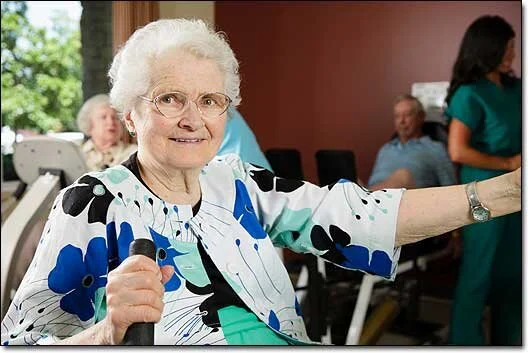Practical steps to curb Alzheimer’s symptoms
by Sharon Arkin, PsyD for Arizona Jewish Post:Alzheimer’s disease is a dreaded brain disease that afflicts an estimated 5 million Americans — mostly people over 65 — and half of people over 85. Feared more than cancer by most people, Alzheimer’s disease is expected to increase exponentially as the baby boomer generation swells the ranks of the elderly. The disease affects language, memory, orientation, mood and motor functions, with symptoms appearing in different orders and worsening at varying rates. Alzheimer’s duration ranges from two to 20 years and, in its final stages, renders the sufferer totally helpless and unable to communicate.There is no definitive diagnostic test for Alzheimer’s disease; its presence may be determined via autopsy of the brain. There is no cure, though several drugs have been approved that provide temporary symptomatic relief for some patients. These drugs have side effects that some users find unpleasant. Some non-pharmacological interventions (described below) can slow cognitive decline and improved the physical well-being and quality of life of Alzheimer’s disease sufferers and their caregivers.In February, President Obama announced a draft plan to combat Alzheimer’s disease, with the goal of finding effective treatments by 2025. The pronouncement was sweetened by the commitment of a $156 million increase in funding for Alzheimer’s research and treatment. With input from a National Alzheimer’s Advisory Council, the final plan was approved on May 15.This plan may be of little comfort to readers who are currently caring for someone with Alzheimer’s disease, but the treatment recommendations proposed here can improve their care recipients’ quality of life and, if practiced by others such as the caregivers, might well delay or reduce their risk of developing this dreaded disease.Numerous researchers have found that people who are physically, mentally and socially engaged in a variety of activities during their adult lives have a reduced risk of developing dementia in their older years.My research at the University of Arizona from 1996 to 2001 demonstrated that people with mild to moderate Alzheimer’s who engaged in two to four years of physical and mental exercise, along with community involvement through student-supervised volunteer work, did not decline cognitively or functionally from baseline testing on many standardized measures during their years of participation. Plus, their moods and physical fitness improved.A major cause of depression among people with dementia is the role loss they suffer as their compromised cognitive abilities make them unable to fulfill the previous household, workplace and community functions that supported their identity and provided sources of satisfaction. Feeling unsure of themselves and fearing failure, they withdraw socially and quickly fall into the role of passive care recipients. Conversations between caregivers and care recipients deteriorate into repetitive questions and answers, such as reminders about doctor’s appointments, mealtimes and mundane activities of daily living.Here’s how to get out of that rut and find relief for the caregivers and stimulation for care recipients.(1) Enlist the part-time aid of an energetic college student — preferably one with a health sciences career goal and a car.An ad in student newspapers, Craigslist, or in campus student employment offices should do the trick. Offering an hourly wage a dollar or two above what McDonald’s offers should be sufficient to attract individuals eager to gain “hands-on” experience and enhance their resumes.(2) Enroll the care recipient in a gym that has treadmills, stationary bikes, weight machines and, preferably, a “Silver Sneakers” exercise program, a benefit offered by many Medicare Advantage insurance plans.Let the gym know you are enrolling someone who has Alzheimer’s who will be accompanied and supervised by a college student. The staff will be happy to instruct the student in the proper use of the exercise equipment and suggest an individual or group exercise routine suitable for the age and health status of the participant. (Prior approval for any exercise program should be obtained from the person’s doctor, with limitations, if any, clearly indicated.)Most people with dementia fear becoming a burden to their families. Explaining how exercise can help them maintain their independence longer can be a convincing argument for reluctant participants.An exercise regimen that was successfully used in the previously cited UA Elder Rehab program is described in detail in “Language-Enriched Exercise for Clients with Alzheimer’s Disease,” a two-volume instructional manual and video available locally from Desert Southwest Fitness (DSW Fitness.com) I recommend that the language stimulation exercises and conversation starters described in Volume 2 be administered by the student partner during and between the various physical exercises. These activities engage the senior participant in meaningful dialogue with the student, distract from fatigue, and provide structure for the student. If the senior participates with student supervision in a Silver Sneakers group fitness class, the language activities in Volume 2 can be administered over lunch or during a snack break.(3) Find a volunteer activity that the person with Alzheimer’s would enjoy doing with the supervision of a student partner.Participants in the UA Elder Rehab program volunteered as story readers at a child daycare center, walked dogs and cleaned cat cages at the Tucson Humane Society, gave wheelchair rides to nursing home residents, bagged bulk rice and beans at the Community Food Bank, picked up trash in parks and stamped new books at a school library.For someone who has become a care recipient, the act of being a service provider builds self-esteem, improves mood and reconnects the individual to the larger community.Source: http://azjewishpost.com/2012/practical-steps-to-curb-alzheimers-symptoms/

